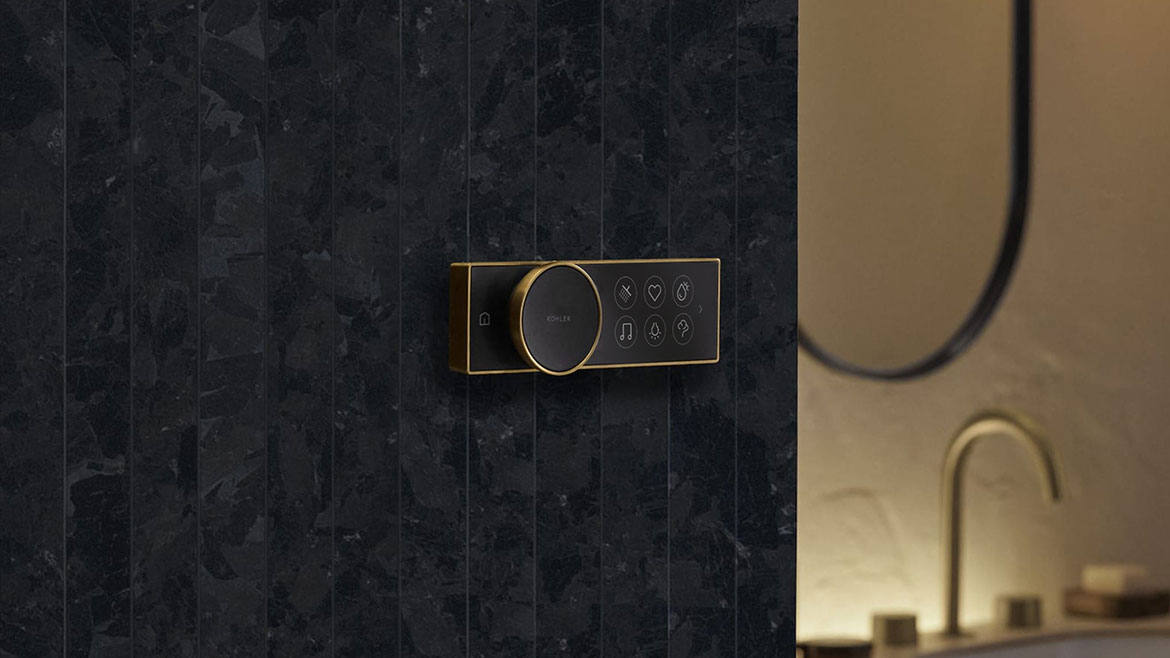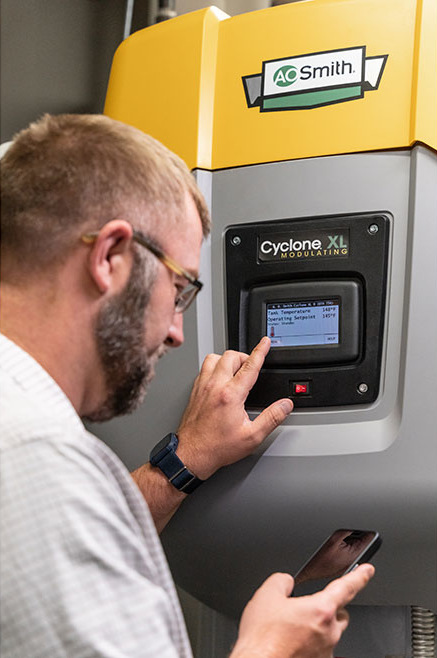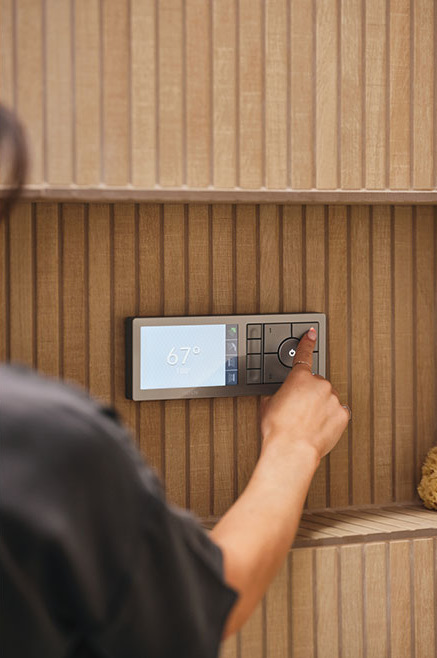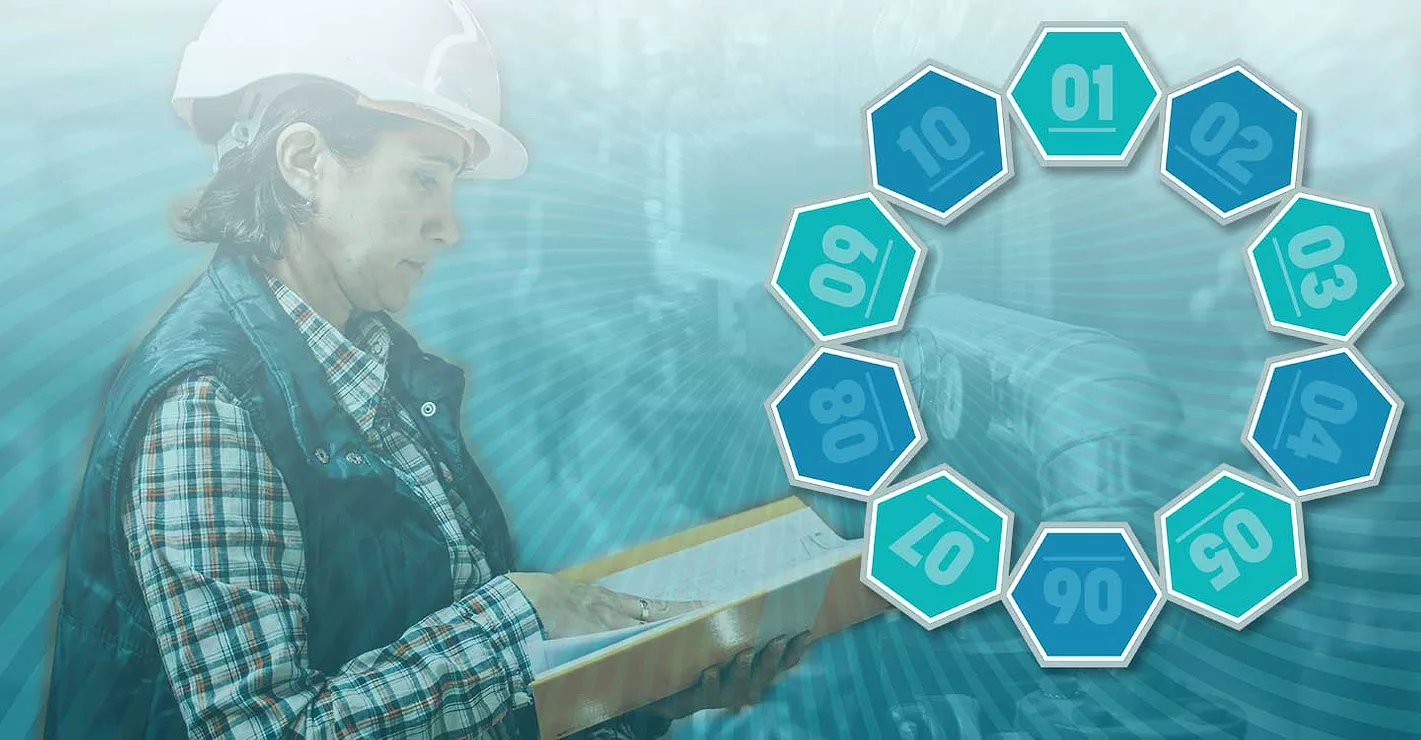Behind the Wall: Where smart plumbing gets smarter
Adoption of connected plumbing systems calls for greater cybersecurity awareness and consumer education.

Behind the wall, smart plumbing technology is – despite its name – anything but hidden these days. From water heaters that connect to WiFi to AI leak detection, smart plumbing technology is prominent in every corner of the PHCP industry. Being in-the-know is increasingly more important to consumers and business owners, and smart technology is the perfect way to keep them connected to what’s happening with their appliances – something that they’ve been in the dark about for years. From smarter water heaters and valves to AI-powered diagnostics and real-time energy optimization, the future of plumbing is here —and it’s connected.
“Smart plumbing technology continues to innovate and change every day as customization and water conservation are priorities for homeowners. They also want products that streamline their day-to-day routines,” says Mason Hall, vice president of connected products for Fortune Brands Innovations, parent company to Moen. They want to know what’s going on – even behind the wall. One way consumers are staying connected is through smart showers. According to Grandview Research, “The global smart shower market size was valued at USD 1.11 billion in 2022 and is expected to expand at a compound annual growth rate (CAGR) of 11.8% from 2023 to 2030.” Showers are, after all, one of the aspects of plumbing that people really care about, because it affects them every day.
These systems offer precision and personalization beyond manual controls. With a smartphone app or voice command, users can turn on a shower, set the perfect temperature and even activate custom settings like steam or lighting—all before stepping foot in the bathroom. “Homeowners are prioritizing high-tech functionality alongside spa-like experiences,” says Shaun Skelton, product manager for showering at Kohler. “Smart valves offer more customized control, and with features like remote diagnostics, even maintenance becomes more efficient.”
This innovation isn’t limited to residential use. Commercial and multifamily housing developments are quickly embracing intelligent plumbing solutions. According to Christopher Freeman, director of connected products at Rheem, segments like multifamily and build-to-rent are prioritizing long-term reliability and energy efficiency over initial costs—leading to broader adoption of connected systems. “There’s been a noticeable shift, as this segment is now focused on total cost of ownership (TCO) and ways to provide more efficient systems, better rebates, and long-term product reliability,” Freeman notes.

A smart shower saves time on installation and offers a more premium aesthetic and experience. This also means that servicing can be simpler with remote diagnostics from the digital control and mobile app. Setup is easy too from a cell phone or tablet. Image courtesy of Kohler
Smart water heaters are also reshaping how homeowners and building managers interact with their systems. These connected units offer real-time insights, remote temperature control, and leak detection—delivering both convenience and peace of mind. “People no longer want their water heater to be ‘out of sight, out of mind,’” Freeman says. “They want visibility into energy use and assurance that their equipment is protected.”
Modern smart water heaters offer much more than just hot water. Users can remotely control temperature settings, monitor energy consumption, and receive instant alerts about problems or maintenance needs. Leak detection systems and automatic shut-off features can detect issues in seconds, providing peace of mind and preventing thousands of dollars in potential damage.
On the commercial side, smart water heaters are being integrated into Distributed Energy Resource Management Systems (DERMS) to support grid stability. Utility companies and energy service providers are leveraging these systems for time-of-use scheduling, demand response, and remote diagnostics—turning once-static equipment into active participants in a more sustainable, intelligent energy ecosystem. "There is growing adoption of smart water heaters across a variety of projects and applications." A. O. Smith Senior Product Manager, Megan Konieczka Darr told us. "Notably, many DERMS providers and utility companies are actively seeking to integrate smart water heaters into their networks. These organizations are leveraging the connectivity of smart water heaters to implement time-of-use scheduling, which helps manage energy demand and reduce strain on the electrical grid during peak periods."
Contractors also stand to benefit. Smart systems often include advanced diagnostics and guided setup tools, simplifying installation and maintenance. According to Freeman, “There’s not much difference in how they’re installed, but smart systems offer more insight during commissioning and servicing, helping contractors work more efficiently.”
While smart technology may seem complex, contractors will find that behind-the-wall smart systems typically mirror traditional setups. Thankfully, these products are designed with installers in mind. “The biggest learning curve is planning the whole system,” Skelton says. “Contractors just need to think ahead about water volume, drainage, and power.”
Still, as Vice President of Watts, David Benaiges points out, contractors will benefit from basic knowledge in areas like connectivity protocols (Wi-Fi, Zigbee), app-based setup, cloud integration and cybersecurity. “Understanding how to safely configure and update these systems ensures optimal performance and customer trust.”
Benaiges adds that smart devices can become entry points for cyber-attacks, so trade pros should need some level of cybersecurity awareness. “It’s important to know how to configure devices securely, and to educate customers about setting strong passwords and enabling two-factor authentication. Related to this is a need for familiarity with updating firmware. Keeping device firmware up to date allows trade professionals to reduce the possibility of vulnerability.”


LEFT: Through platforms like A. O. Smith’s iCOMM Connectivity Platform, users can do things like control the set point and differential of their water heater, register for detailed diagnostic fault notifications, access run history and more. Image courtesy of A. O. Smith
RIGHT: Moen’s Smart Shower digital valve has a compact design that helps make the installer’s job easier. With 30-foot data cable between the valve and controller, the location of the valve can be put wherever is most convenient for the plumber and homeowner. Image courtesy of Moen
Contractors don’t need to be IT experts—but they do need to communicate value. Whether the feature is leak detection, personalized temperature settings or integration with Alexa or Google Assistant, the conversation should revolve around comfort, convenience, and peace of mind. As Senior Product Manager for Watts, Shashwat Nath puts it: “The intelligence in these systems is like a trusted guide—helping contractors and customers alike avoid costly setbacks, reduce energy waste, and take control of their water usage.” This is especially important to customers worried about leaks, rising utility costs or aging infrastructure.
AI is poised to further transform smart plumbing. In residential and commercial spaces alike, AI can alert homeowners to potential problems before they even begin to affect their lives. In commercial buildings, it goes a step further. “Imagine a digital mixing valve that ‘talks to’ the water heater and adjusts based on real-time occupancy and weather,” says David Benaiges, vice president of Watts Digital. "Integration with demand response programs through utilities will allow smart water heaters to adjust heating cycles in real time to ease strain on the grid, creating a more sustainable and intelligent energy ecosystem," according to Konieczka Darr. "Organizations are leveraging the connectivity of smart water heaters to implement time-of-use scheduling, which helps manage energy demand and reduce strain on the electrical grid during peak periods."
Predictive maintenance, advanced diagnostics and energy optimization are just the beginning. There’s potential in expanding AI into everyday fixtures—think smart faucets that adapt water flow based on use, or toilets that analyze health indicators. “We’re not far off from plumbing systems that learn, adapt, and respond just like smart thermostats or lighting systems do today,” Hall notes.
The next generation of plumbing is already here — and it's smarter, more sustainable, and increasingly out of sight. From behind the wall valves to smart water management platforms, contractors and consumers alike are benefiting from solutions that not only solve today’s challenges, but anticipate tomorrow’s needs. For professionals in the industry, the message is clear: embrace the change, invest in the learning curve, and become the guide your customers need in this new era of connected plumbing.
Looking for a reprint of this article?
From high-res PDFs to custom plaques, order your copy today!









